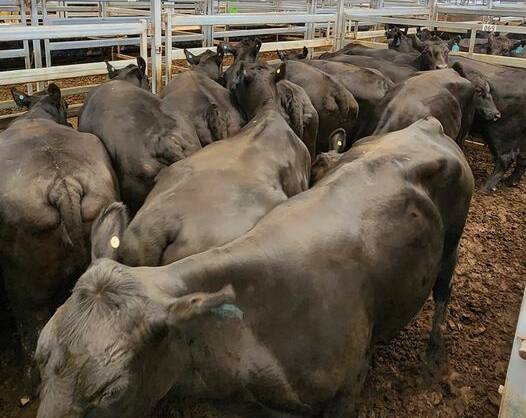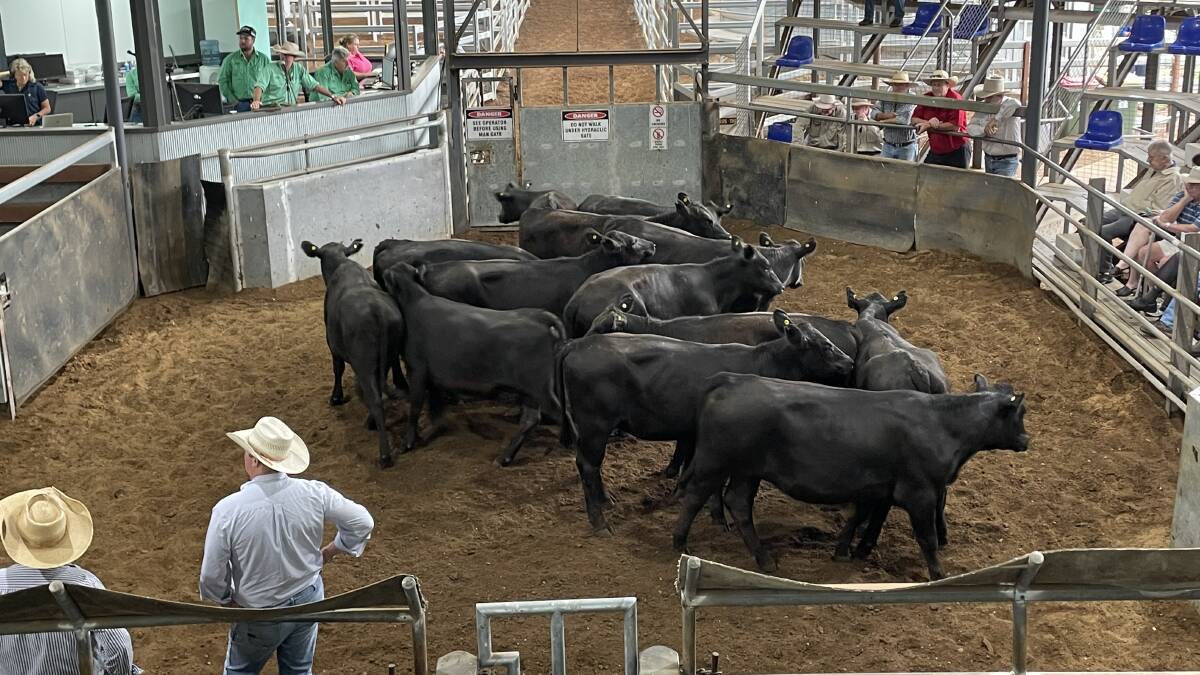
There is a story of two cow markets at the moment, with strong bids for replacement breeders while those going to slaughter face downward price pressure.
Subscribe now for unlimited access to all our agricultural news
across the nation
$0/
(min cost $0)
or signup to continue reading
The good news is that quality breeders that fit the demand profile of beef producers - whether that be Angus, Charolais or Brahman/Hereford - continue to sell very well.
Special store sale breeders at Casino on Saturday topped that market at $3900 for cows with calves and $3400 for heifers in calf. At Tamworth last Wednesday, the best Angus store heifers topped at $3200.
At the Scone prime sale on Tuesday, Angus yearling heifers going back to the paddock made 426.2 cents a kilogram for 385.4kg to bring $1642.51.
Meanwhile, cows to slaughter fail to attract the money. Cracking Angus cows at Tamworth on Monday, 636kg, made 300c/kg to return $1911.
Last November, Bindaree Food Group CEO Andrew McDonald predicted cows would fall to 300c/kg by Christmas, which it did, and now he reckons it will slide further to below 250c/kg in the next three months. He says grain-fed cattle will follow trend.
"We're in a falling cattle market," he said.

"Everytime we buy cattle it gets cheaper, but the price of meat falls further."
Last week, the key price for export cows (CL90) fell 8.9c/kg to sit at 720.9c/kg.
Meanwhile, Indian buffalo is sitting at 300c/kg, Brazilian grass-fed beef commands 600c/kg.
Bending the prices significantly is the US grain-fed product, over-produced as a result of drought-inspred culling, which has taken Australia's most lucrative Asian markets in Japan and Korea.
European buyers, who are putting so much pressure on Aussie farmers to get woke over climate change, only take 2000 tonnes of our 1 million tonne annual total so will hardly help lift prices.
"Cattle will get cheaper in February, March and April."
Also read:
To figure out why, producers might look at the latest American drought conditions, which continue with "little change" despite well-published flooding in parts of California.
"A lot is tied to the US drought and we have a long way to go," Mr McDonald said.
"The drought has to end before they can restock and then there is a record amount of beef in cold store."
As it stood last week almost 43pc of the lower 48 states remained in drought - 2pc down on the week prior and 13.3pc back on last month.
At the same time the number of cattle on feed dropped for the last four months of last year with early January figures 3pc back on 12 months prior.
So, there is movement, albeit slowly, and that is one reason why processor forecaster are calling for market upswing.
"In the longer term, later this year and into next year, we will see strong demand for Australian beef," said Mr McDonald.
"But in the short term it is under huge pressure".
- Subscribers have access to download our free app today from the App Store or Google Play
- Not already a digital subscriber? Sign up for as little as $3.75 a week

